The Complete Guide to Teaching Prefixes and Suffixes
By Mary Montero
Share This Post:
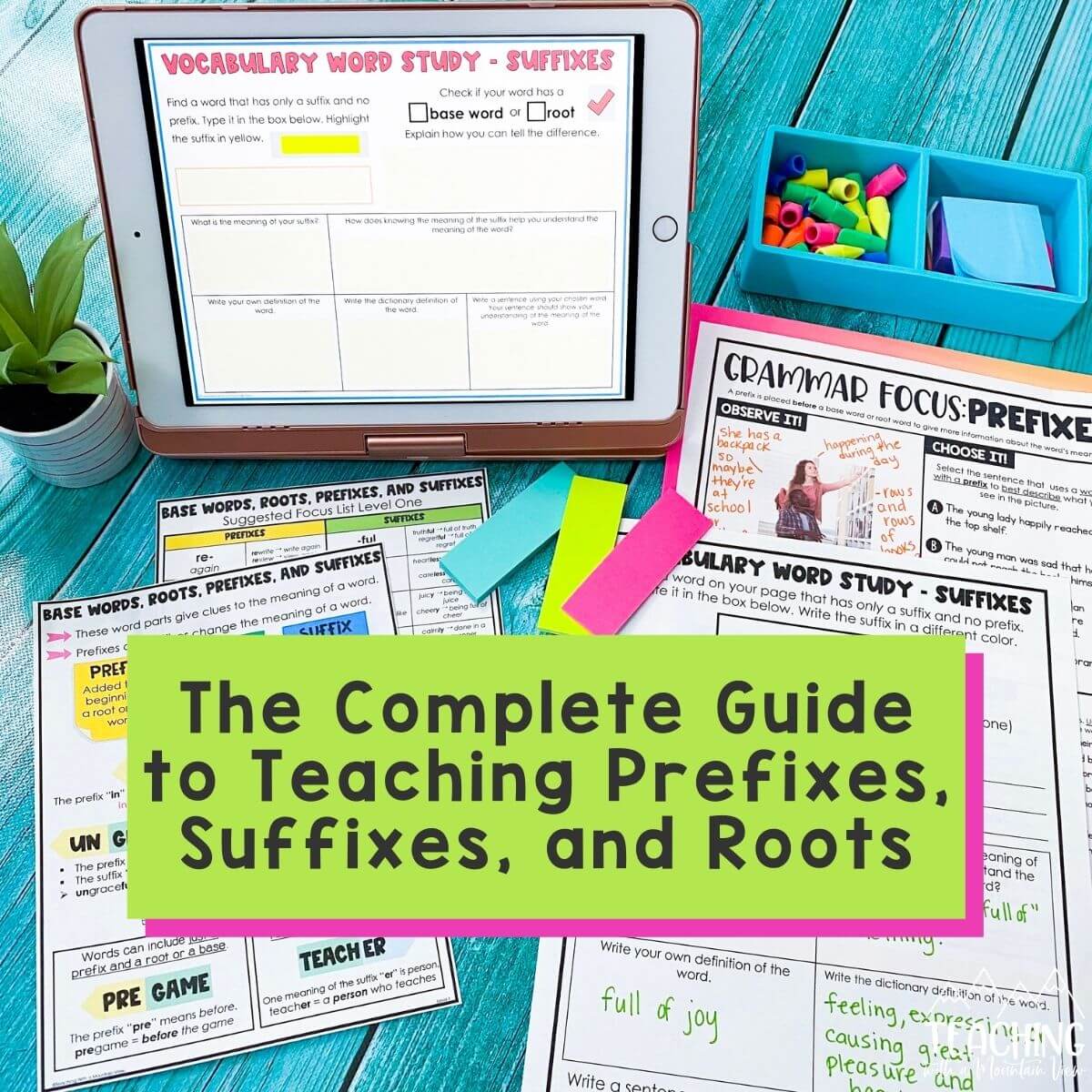
Once students reach upper elementary, they have a lot of decoding strategies in their reading toolbox. At this point, many students have mastered decoding and have many tools in their decoding toolbox. As texts become more complex, introducing new vocabulary skills is crucial to their success. That’s where teaching prefixes and suffixes along with roots and root words comes in.
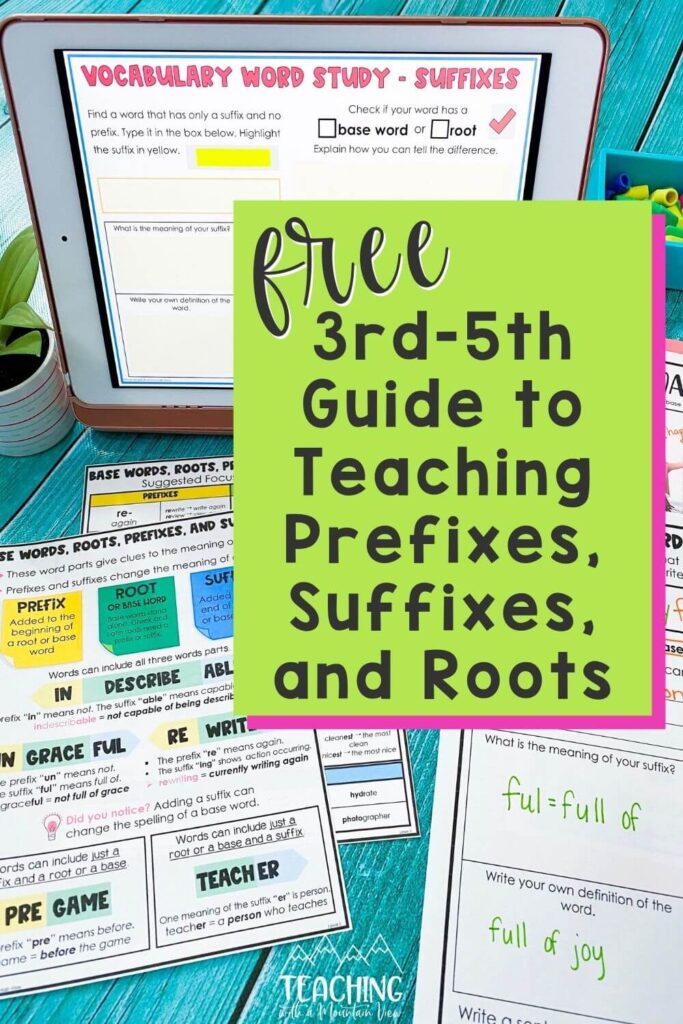
Why Study Word Morphology?
More than half of the English language comes from Greek or Latin roots. As students move into technical texts, Greek or Latin roots can account for closer to 75% of the vocabulary. If you have ELL students who speak Spanish, those same roots are often used in Spanish as well. This means teaching students just one root can help them tackle dozens of new words. Teaching prefixes and suffixes along with roots helps students unlock even more vocabulary and interpret unfamiliar texts.
There is so much we can add to the study of morphology as students grow their understanding, but here is how I introduce the concept with my students.
The Connection to Context Clues
One of the major vocabulary skills I introduce each year is context clues. We talk about all of the different context clues strategies, practice them, and use them day in and day out. After we’ve studied context clues in-depth, moving on to the morphology of words and studying prefixes, suffixes, roots, and base words is a natural progression for students. We discuss how prefixes, roots, and suffixes are actually context clues in and of themselves. Sometimes we use the clues these word parts offer to get a general meaning of the word, even if we can’t write a specific definition, much as we do when using context clues to determine the general meaning of a word.
Studying Word Parts to Increase Vivid Vocabulary
I love this unit of study because once students start really working with word parts, it opens up a whole new section in their “vivid vocabulary” toolbox! Sure, said might be dead, but there are so many other boring words out there that can be spiced up or modified by adding affixes to roots and base words, and students usually don’t even realize that’s what they are doing. Here are a few examples I give to students about using these words parts to create synonyms for “boring” words:
- weird = unusual
- nice = thoughtful
- bad = dreadful
- happy = cheerful
- said = remind, etc.
- yes = absolutely
- funny = amusing
Teaching the Difference Between Roots and Base Words
One misconception that often causes confusion is that a root word has to be a “stand-alone word.” This isn’t the case! I am always careful to explain to students that Greek and Latin Roots are important parts that make up a word, but they don’t always stand alone. They need either a suffix, prefix, or both in order to form a complete word. THIS site does a phenomenal job of thoroughly explaining the difference between roots and basewords, but here are a few examples of roots that can’t stand alone:
- Aud (hear or listen)
- Auto (self)
- Equi (equal)
- Magni (big or great)
- Script (to write)
- Vis (to see)
- Graph (to write)
- Words can also be made up of more than one root, like autograph
Base Words, on the other hand, are standalone English words that use affixes to form other words. A couple examples:
- Cycle (bicycle, tricycle, cyclist). Cycle is actually based on the root “cyc”, which means circle.
- Act (actor, acting, reenact, action). Act is also based on a root, act, which means “do.”
How To Introduce Roots, Prefixes, and Suffixes
I like to introduce several roots, prefixes, and suffixes all at the same time to begin our morphology study. Then we continue adding new parts throughout the year. I’ve found that focusing on a select few each year is much more impactful than trying to master dozens and dozens of word parts. I have made a list of the prefixes, suffixes, and roots/bases that I tend to emphasize each year. Of course this will vary based on your students’ readiness, and of course you will likely end up naturally addressing more than what is listed here, but it’s a good starting point!
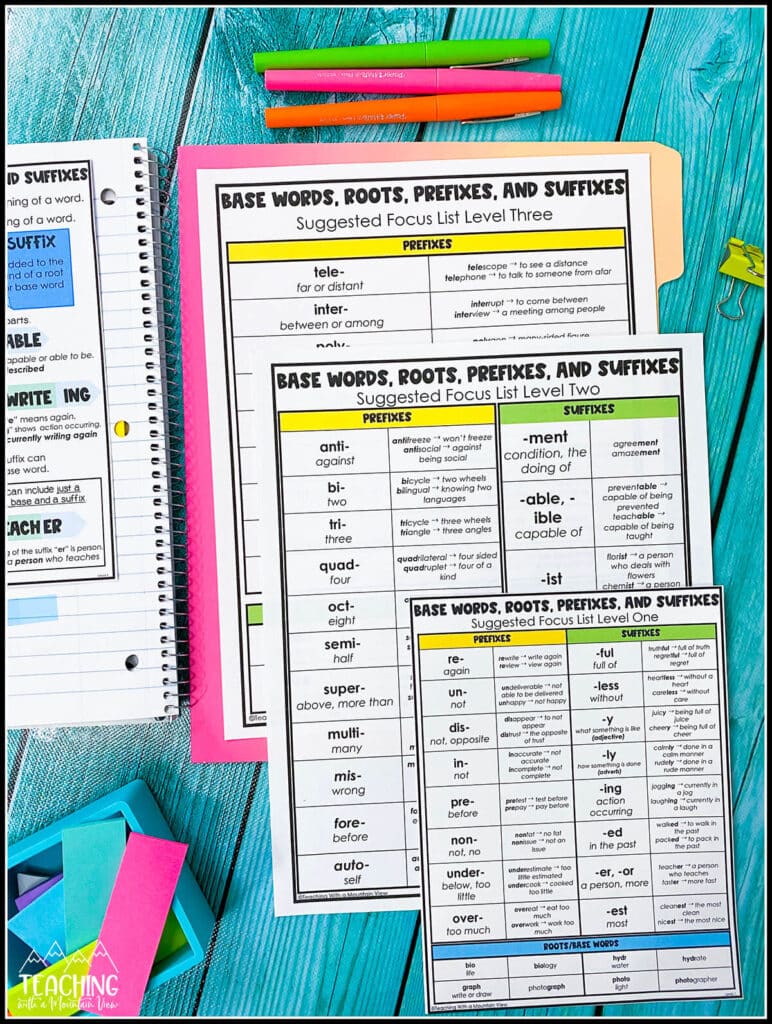
Here is the anchor chart I create with my students as we begin our study. Yes, there is a lot of information included, but it’s all done over the course of a day or two with students. My absolute favorite part of this prefixes and suffixes anchor chart is the interactive bottom portion. I used the small rectangular sticky notes (you can cut regular ones or just use paper) to let students form their own words. You can even see where some of them have multiple layers because once we started talking about a specific prefix or base word, they can go crazy coming up with others.
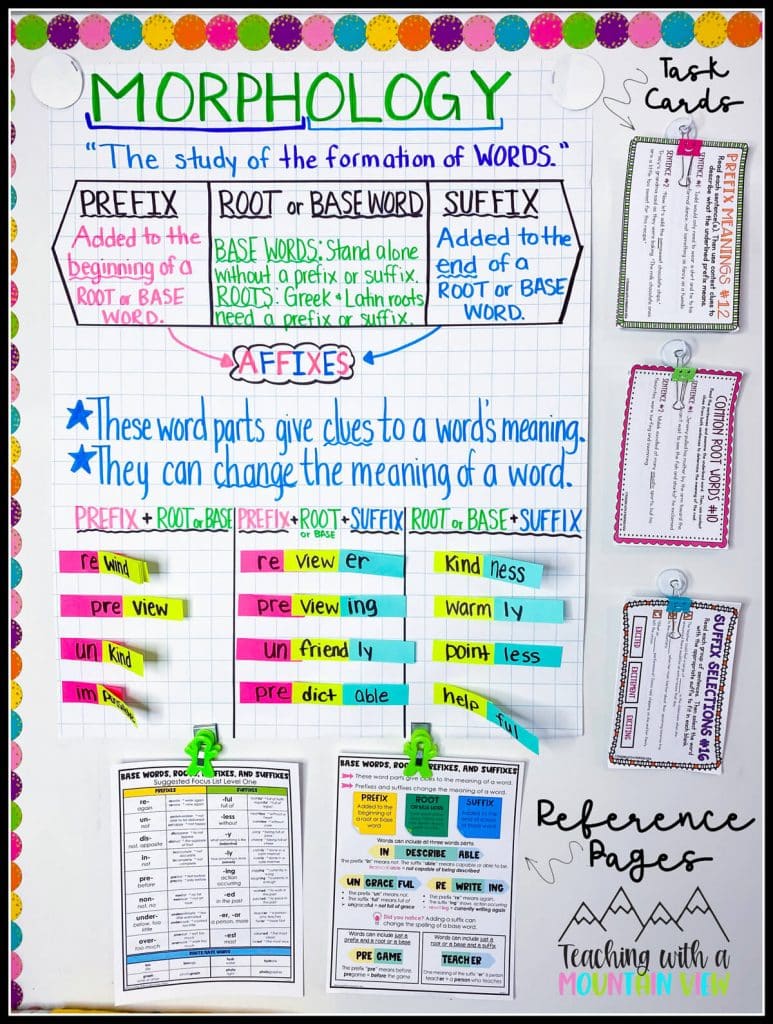
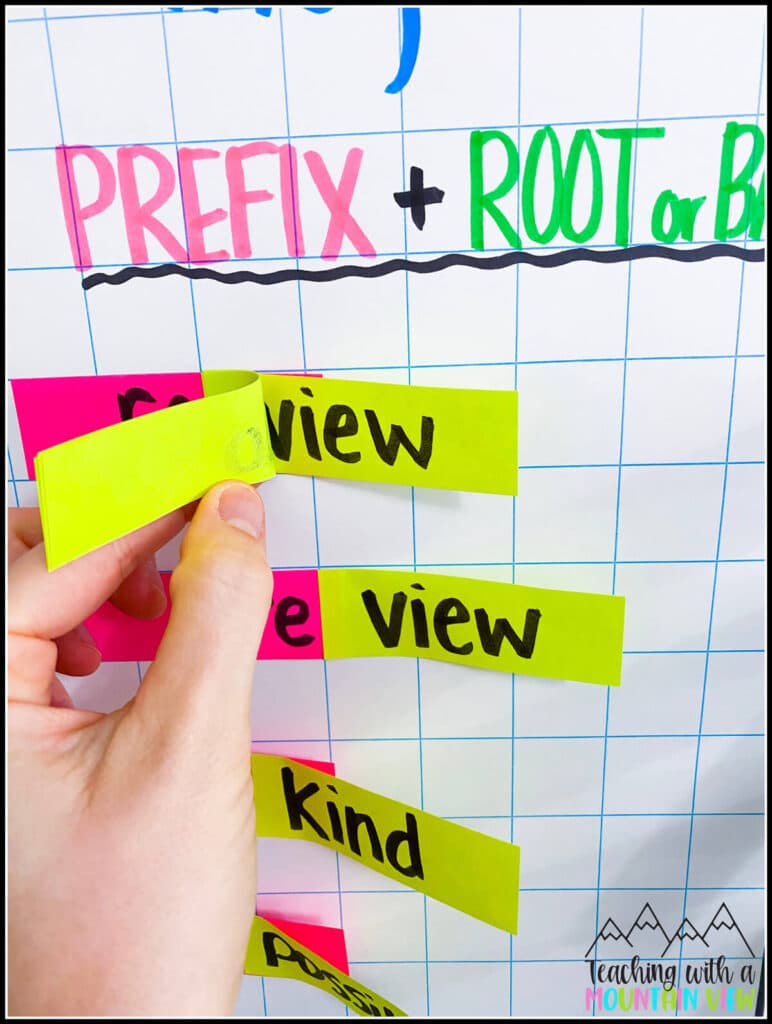
After we’ve created the anchor chart, they take notes in their notebook using the template below. I want to emphasize that they do this after we do the anchor chart together because it’s important to me that they are totally engaged with us while creating the anchor chart. I also give them some tiny sticky notes (which we actually get from our reading toolkits) and they love making their words using the notes!
Not only do they create their foldable, but I also provide them with this printable anchor chart to put in their notebooks for later reference. It very closely mirrors the chart we create together and serves as another piece of reference material for later. If you choose to, this is a great time to print the “suggested order” pages in a reduced size for their reference, too. The foldable and printable anchor chart are FREE via the link at the bottom of this post!
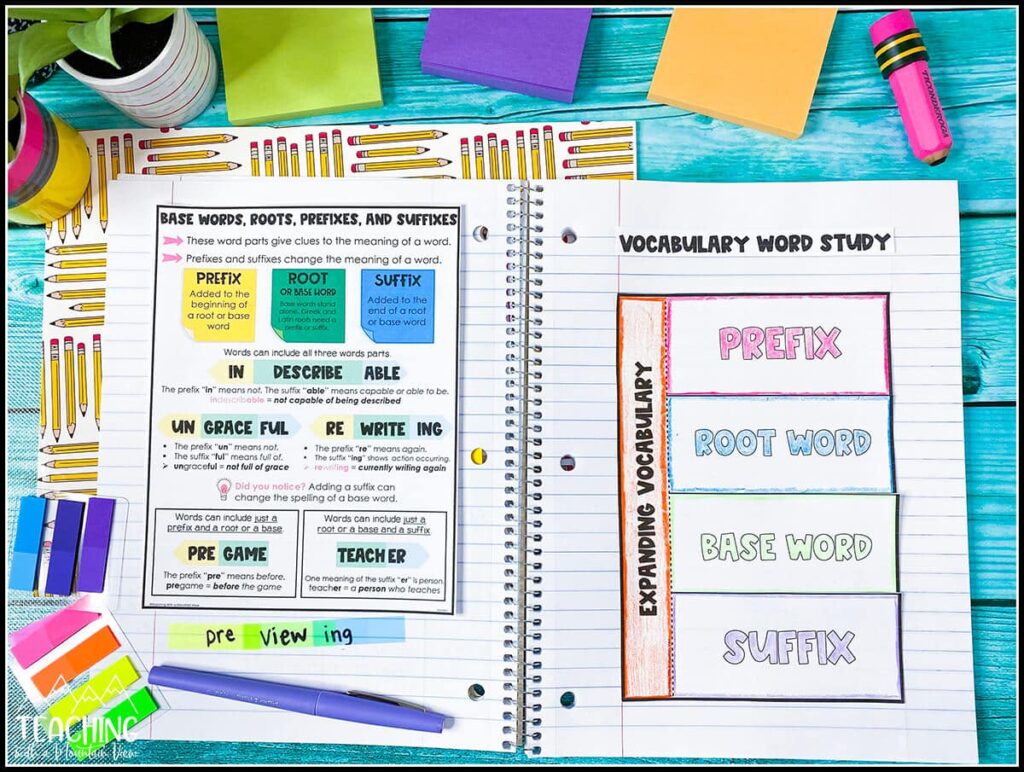
Morphology Minutes
You can also use Morphology Minutes to practice morphology in just minutes a day with this science of reading-aligned resource! It covers 27 different prefixes and is the perfect supplement to your word study routine! There are eleven sets, with two pages in each set. The prefixes have been grouped logically to help students make connections. Each set includes:
- Word part definitions
- Word Sums
- Word Chains
- Sentence-Level Tasks
- Paragraph-Level Tasks
A note on spelling: We absolutely talk about the way adding suffixes can impact the spelling of words, and I note it on the chart they add to their notebook. By the time we talk about this, we have often already discussed it during our word study, they just might not realize with such clarity that they are working with suffixes.
Books For Teaching Prefixes and Suffixes
I am a huge proponent of using authentic texts to teach reading and writing skills, and I DO encourage you to go on a hunt (see below) for words. But there are some super cute books written specifically to help children understand prefixes and suffixes and their purpose. Here are my favorites. Click the image below or HERE to purchase them via my Amazon affiliate link:
Videos for Teaching Prefixes and Suffixes
I would be remiss to not mention some of the awesome YouTube videos out there for teaching prefixes and suffixes! So many of my students truly gravitate toward these types of videos, so I try to include them as often as I can.
- “Prefix or Suffix?” by The Bazillions for 3rd/4th
- 5-Minute Latin and Greek Roots for 4th/5th+
- Latin and Greek Roots and Affixes for 4th/5th+
Upper Elementary Prefix and Suffix Activities
Once students have started to grasp the way roots, prefixes, and suffixes work together, it’s time to reinforce their new skills. These activities are ideal for centers or independent work.
Word Sort
This FREE differentiated activity has three complexity levels. Students highlight either a prefix, root, or suffix in each word and place it under the correct category. Some are much easier than others, so it’s fun to see what parts they pick out of each word.
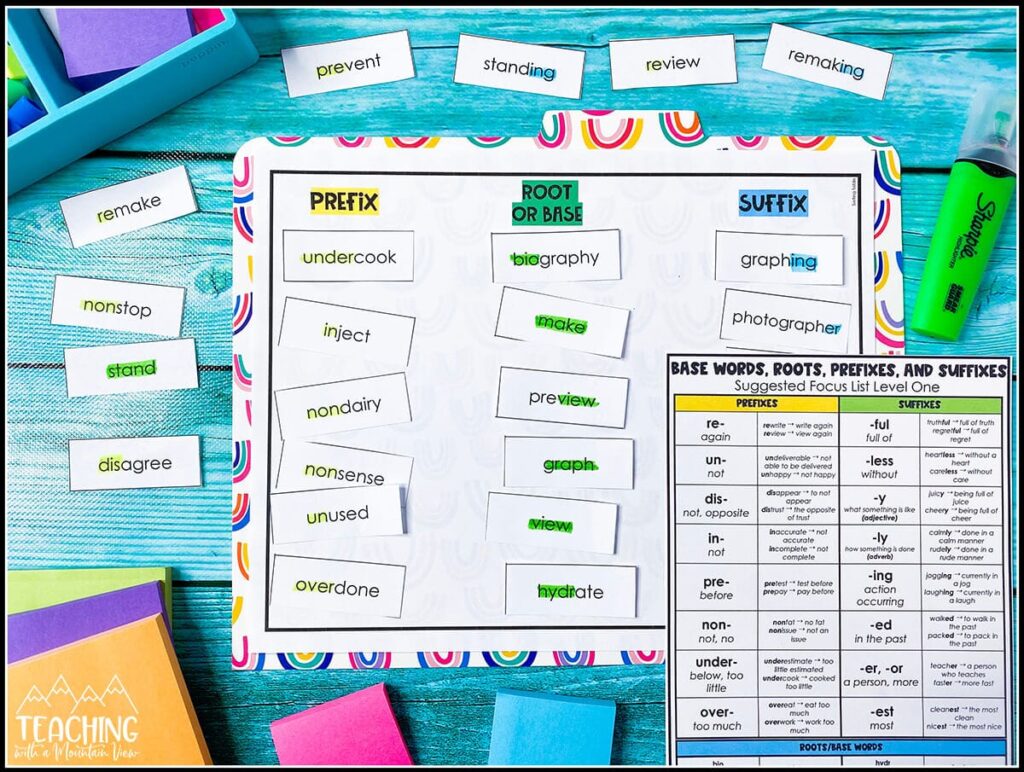
Book or Magazine Scavenger Hunts
This one really gets students thinking! They search through a book to look for one word with a prefix or suffix. Then they show their understanding by identifying the prefix, suffix, root or base word, explaining its meaning, using it in a sentence, and more.
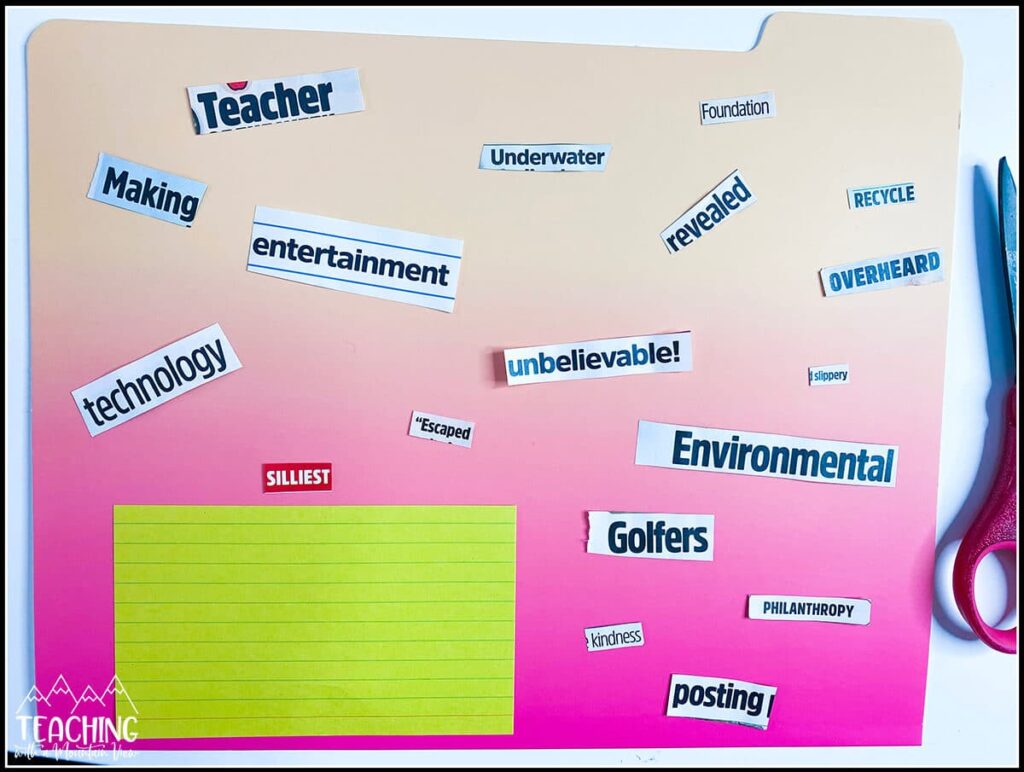
If you have access to magazines, you can also have students create a prefix, suffix, or root collage. Students also love cutting out words and using them to create their own funny sentences.
Task Cards
These are not your typical multiple-choice task cards! They encourage students to use context clues and their new morphology skills to determine the meanings of common root words, prefixes, and suffixes. Because of their difficulty, they are best suited for grades 4+. CLICK HERE to see them on TpT.
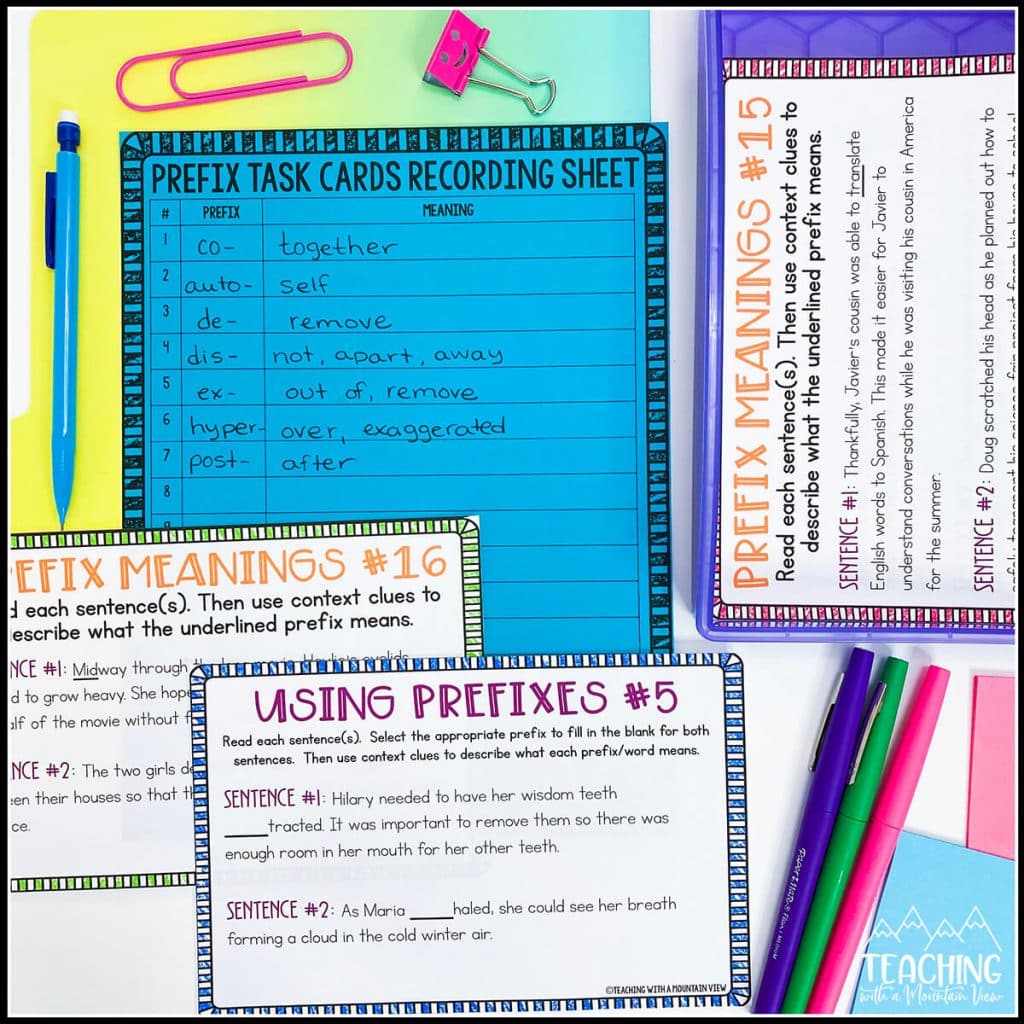
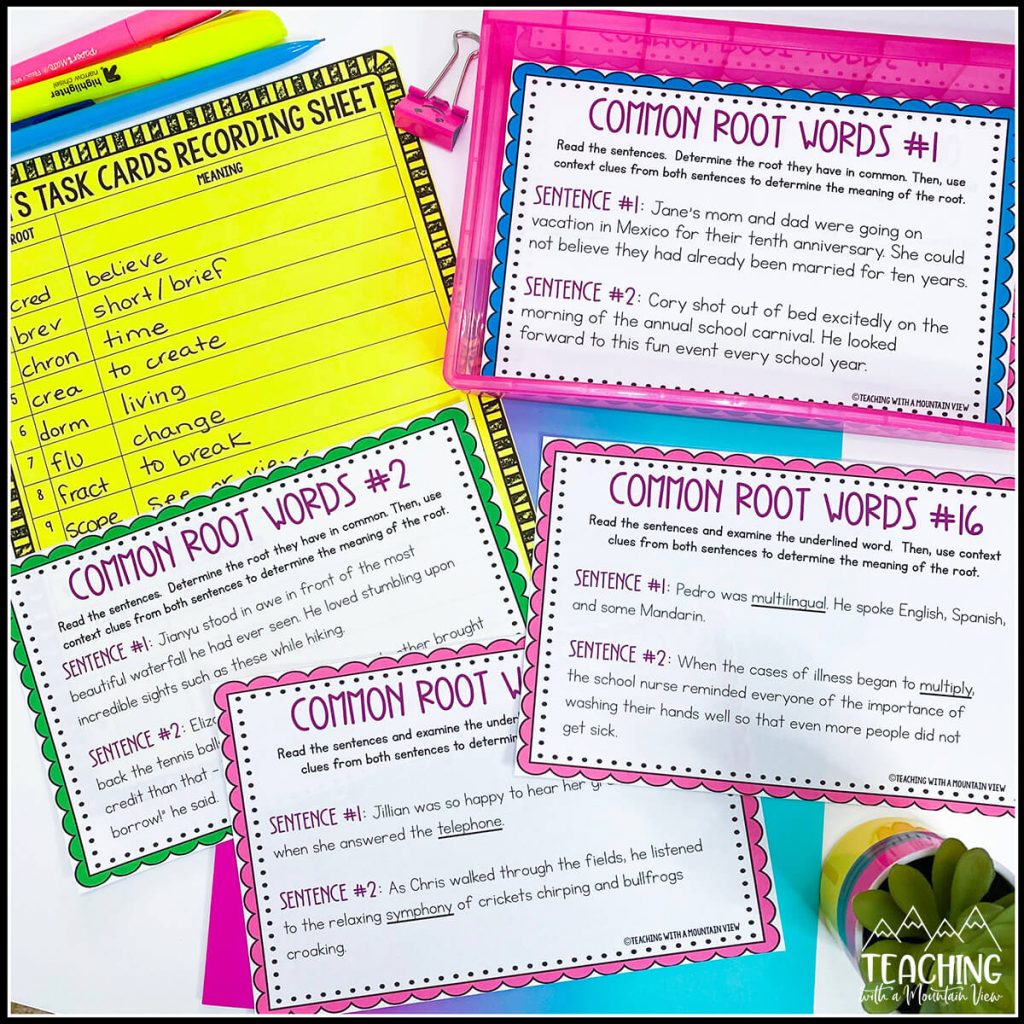
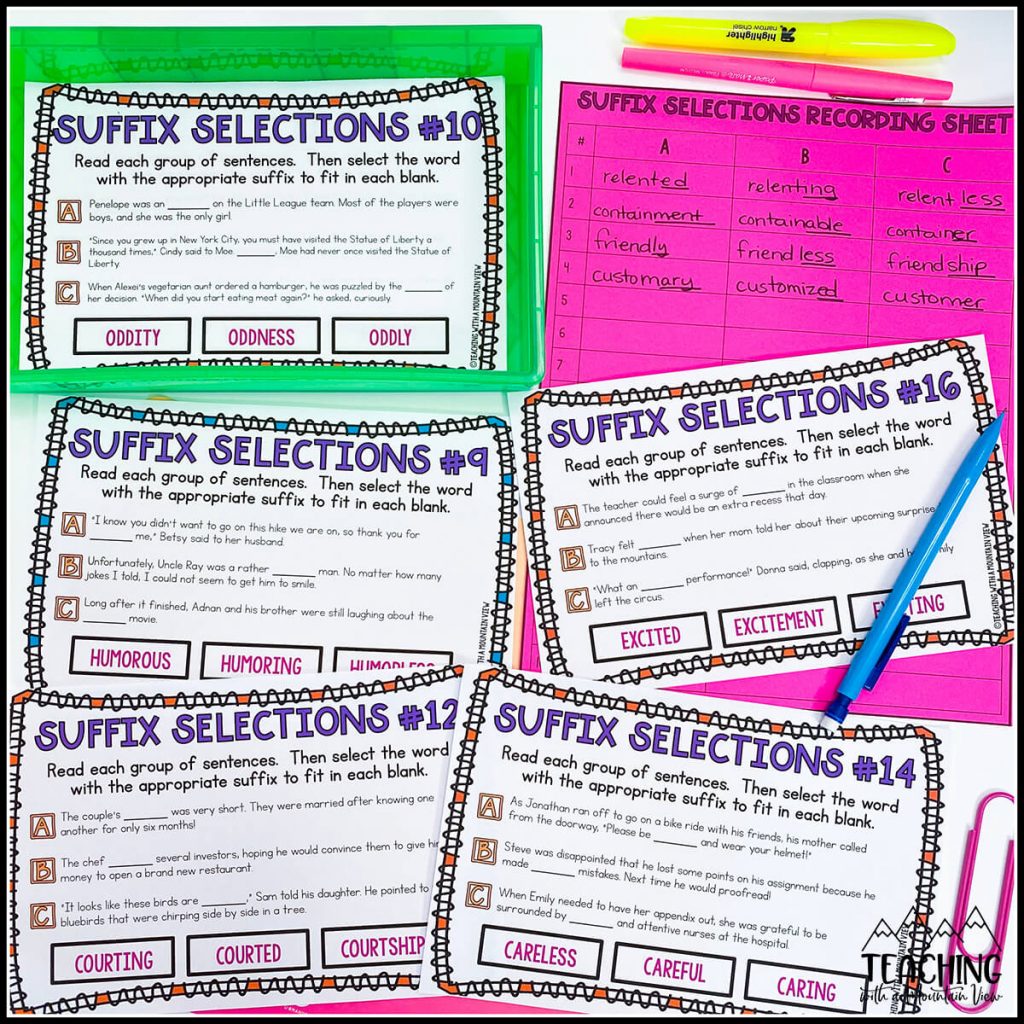
Quick Review
I’ve written several posts about using pictures to teach. This FREE prefix sheet is a simple grammar review, which you can also use for a quick assessment. It’s just one more way to get kids thinking about and generating words with prefixes and suffixes. I also included these free graphic organizers/word study pages.
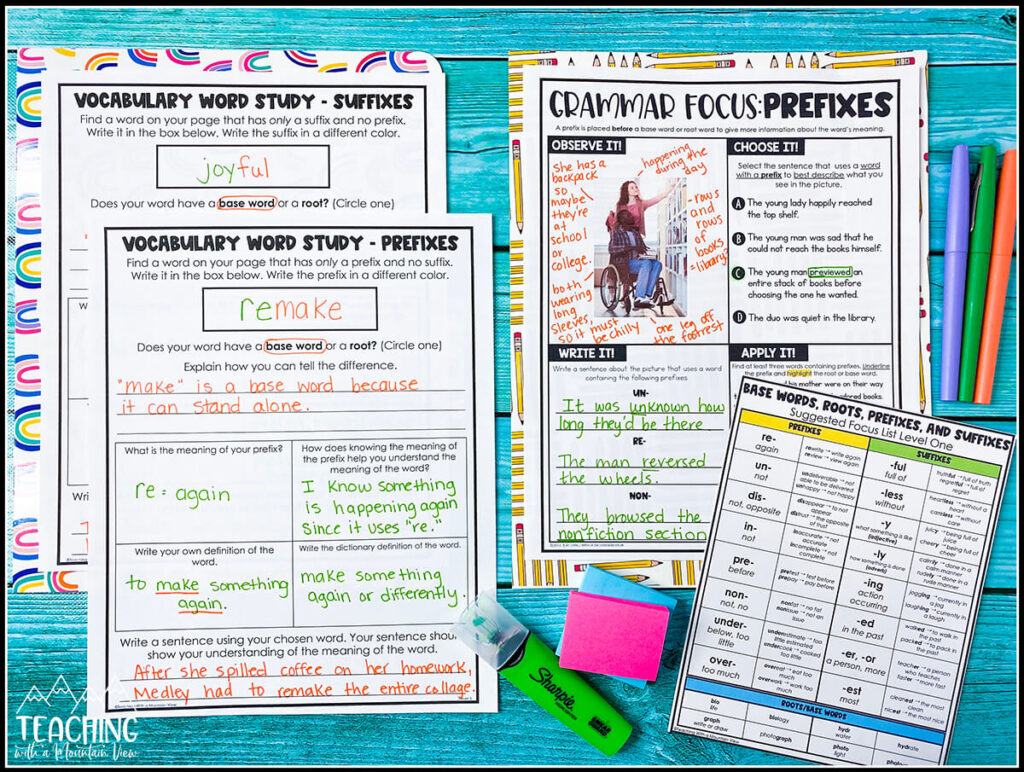
You can also teach and review word parts (morphemes, morphology) with this Using Pictures to Teach Morphology resource. Your students will love learning and applying knowledge of prefixes, suffixes and root/base words to pictures, short passages, activities, and questions. This resource is the perfect supplement to your morphology study!
Download the FREE Prefix, Suffix, and Root Bundle
Are you ready to get started teaching prefixes and suffixes? Of course there are dozens of other amazing ways to practice this skill (and that’s probably how much practice they will need to fully grasp it!), but if you’d like to download the free resources featured throughout this post, you may grab printable and digital options below.
Mary Montero
I’m so glad you are here. I’m a current gifted and talented teacher in a small town in Colorado, and I’ve been in education since 2009. My passion (other than my family and cookies) is for making teachers’ lives easier and classrooms more engaging.







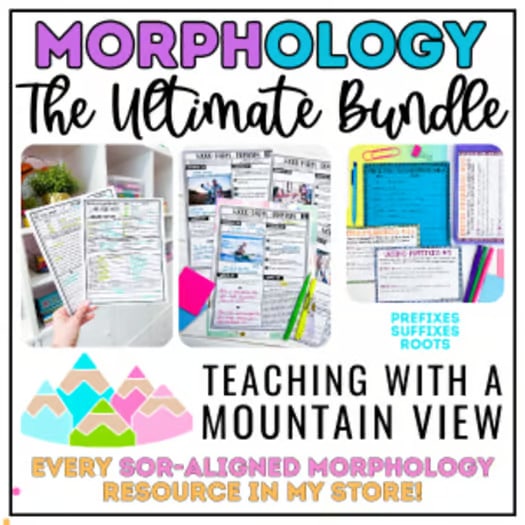

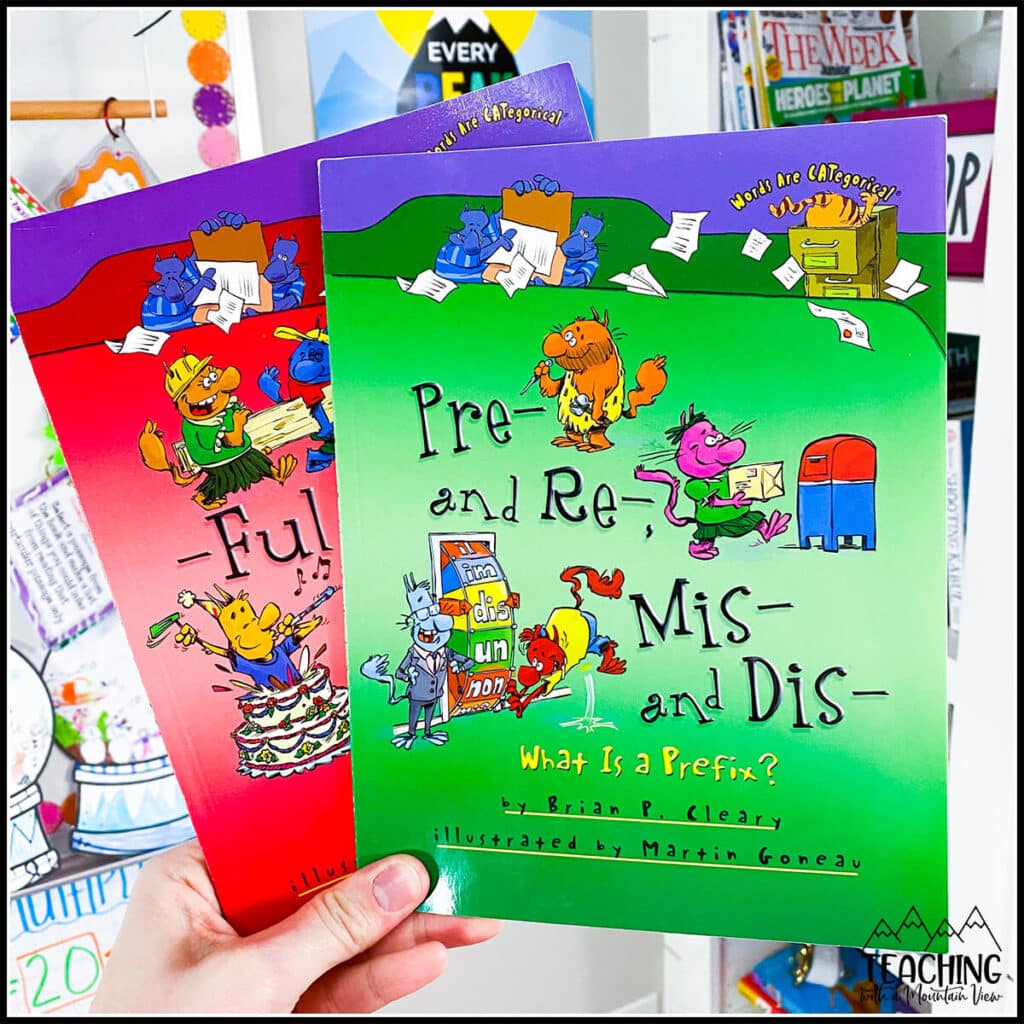
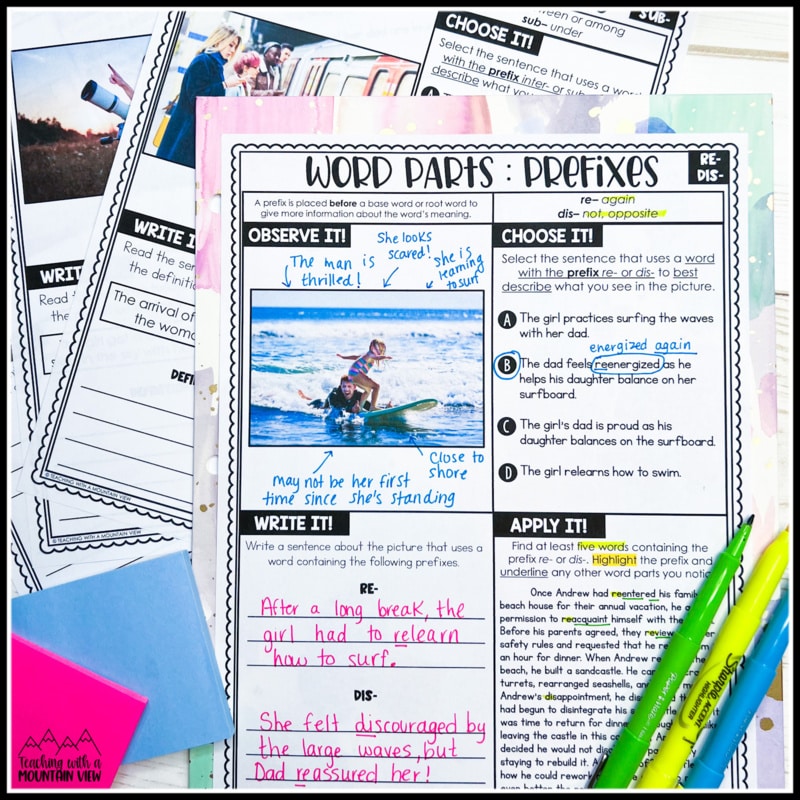





Thank you. I am a new teacher and I am struggling. this was very helpful.